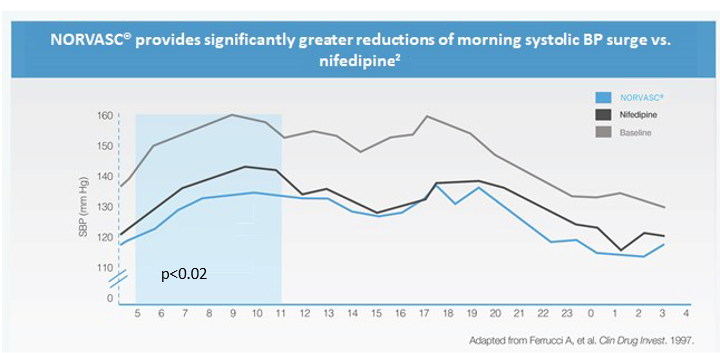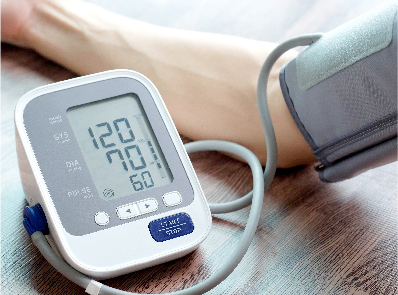Norvasc®
Reduction Morning Surge in Blood Pressure
NORVASC® provides significantly greater reductions of morning systolic BP surge vs. nifedipine2

An open crossover study of patients (N=40) with mild to moderate essential hypertension (DBP between 95 and 115 mm Hg). Patients were randomly divided into 2 groups: Group A received amlodipine and then nifedipine GITS; Group B received these treatments in the reverse order. Initial doses were amlodipine 5 mg or nifedipine GITS 30 mg. If BP control (defined as DBP <90 mm Hg or 10% reduction from baseline) was not achieved after 2 weeks, the dose of either medication could be doubled (to amlodipine 10 mg or nifedipine GITS 60 mg). Each treatment phase lasted 12 weeks. Before and after each treatment phase, 24-hour ABPM was performed, with measurements obtained every 15 minutes between 7 AM and 11 PM, and every 30 minutes between 11 PM and 7 AM. Both drugs significantly reduced BP.2

The study evaluated the effects of monotherapy with the long-acting angiotensin II receptor blocker valsartan compared with the long-acting calcium antagonist amlodipine on ambulatory and morning BP. Ambulatory BP was monitored before and after once-daily dose of valsartan (valsartan group, n = 38) and amlodipine (amlodipine group, n = 38) therapy in 76 hypertensive patients. To achieve the target BP of ≤140/90 mm Hg, valsartan was titrated from 40 mg/day to 160 mg/day (mean dose 124 mg/day) and amlodipine was titrated from 2.5 mg/day to 10 mg/day (mean dose 6.4 mg/day).1
BP: blood pressure
References:
- Eguchi K, Karia K, Hoshide Y, et al. Comparison of valsartan and amlodipine on ambulatory and morning blood pressure In hypertensive patients. Am J Hypertens. 2004;17(2):112-117.
- Ferrucci A, Marcheselli A, Strano S, Ciavarella GM, Messa F, Calcagini G. 24 – hour blood pressure profiles in patients with hypertension treated with amlodipine or nifedipine GITS. Clin Drug Invest. 1997;13(suppl 1):67-72.
NORV-2024-0032
